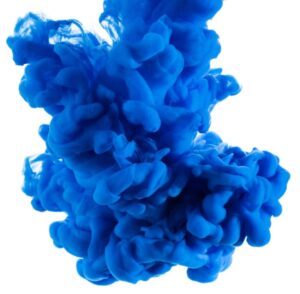- November 30, 2022
- Methylene Blue, Red Light Therapy, Women's Health

METHYLENE BLUE AND RED LIGHT THERAPY FOR DEMENTIA, PARKINSON’S, AND ALZHEIMER’S DISEASE – November 21, 2022
Below is a summary of a presentation I recently gave to the Women’s Agceptional Meeting in Norfolk, Nebraska. Grab a cup of coffee and enjoy this new information into the fascinating world of dye therapy.
Existing “approved” drugs for dementia obviously do not work or they would be curing people and the disease would vanish. This does not mean however that effective treatments do not exist. It is important to learn what is happening in the brain of a person with dementia. Mainstream medicine admits they do not know what causes brain disorders like Parkinson’s, Alzheimer’s, and other forms of dementia. For the past 50 years, mainstream medical therapy theory has suggested that genetic defects are the cause, but millions of dollars spent on research have resulted in no effective treatments, let alone cures.
A ground breaking study from 2017 reports that as the brain ages, mitochondrial metabolism decreases and this phenomenon is possibly the main culprit behind many neurodegenerative diseases, including Alzheimer’s and Parkinson’s. What this means is that if your brain cells are metabolizing properly, dementia and other neurologic diseases will NOT exist. All the criteria associated with a healthy brain-from memory retrieval speed, concentration, and focus-are dependent on adequate energy supply in the form of adenosine triphosphate (ATP). As energy production (also known as the metabolic rate) within cells of the brain decline with age, so too does your ability to think, remember, and speak clearly.
One of the dominant factors responsible for the curving of energy production with age is nitric oxide. Physicians and nurses are taught in medical training that nitric oxide is a “miracle molecule” of anti-aging, brain health, athletic performance, and overall health. This theory is being increasingly disproven by evidence mounting in recent decades.
Nitric oxide is not a miracle molecule. It is a toxic free radical found in air pollution, and its causative role in dementia-related disorders like Alzheimer’s disease is becoming increasingly clear.
For example, nitric oxide is found to accumulate around the amyloid plaques inside the brain of Alzheimer’s patients, and it has been hypothesized that nitric oxide could be responsible for brain cell death found in Alzheimer’s and other forms of dementia. The negative effects of nitric oxide suggest that nitric oxide inhibitors, like methylene blue, could be remarkably effective for treating dementia. A fascinating attribute of methylene blue for treating brain disorders is that it immediately accumulates in the brain, making it a particular interest for dementia in all kinds of brain related disorders. Quoting Dr. Raymond Peat, “nitric oxide poisons the ability to oxidize glucose into carbon dioxide, increases lactic acid, and the cell has less energy and is more excited by the acetylcholine, so basically it becomes susceptible to dying in proportion to the overstimulation of the acetylcholine.” What does nitric oxide have to do with methylene blue? Methylene blue happens to be one of the most potent nitric oxide inhibitors known. It is a tool that can powerfully reduce nitric oxide synthesis and scavenging existing nitric oxide from the blood and body.
Scientists studying the brains of Alzheimer’s patients have noticed commonalities among patients, including abnormally-shaped TAU proteins or “neurofibrillary tangles” within brain cells called neurons. The following is what methylene blue impact can have if it can resolve these problems:
* Neurofibrillary “tangles.” The brains of mice that have been genetically engineering to lack TAU protein do not function properly, leading researchers do conclude the misshapen TAU proteins found in brain cells of Alzheimer’s patients play a role in the disease. A group of scientists at the Keio University School of Medicine in Japan published a study in 2019 reports methylene blue can repair the problem by inhibiting the formation of TAU neurofibrillary tangles in the brain.
* Beta amyloid plaques. Another hallmark of Alzheimer’s disease is the appearance of beta amyloid plaques surrounding brain cells. Remarkably, methylene blue has been shown to prevent beta amyloid plaques from forming on the outside of neurons. Evidence suggests that methylene blue can help solve both of the primary hallmarks of Alzheimer’s disease, i.e., neurofibrillary tangles and beta amyloid plaque. Not bad for a molecule originally developed as a fabric dye!
What about on actual Alzheimer’s patients outside the laboratory? Can methylene blue help actual patients with dementia? In the study on Alzheimer’s patients in 2019, scientists administered 8 mg to 16 mg of methylene blue daily while monitoring their brain function. The methylene blue stopped Alzheimer’s disease dead in its tracks! Quoting Georgi Dinkov, “treatment with 8 to 16 mg of methylene blue daily reduced cognitive decline by more than 85%.” Methylene blue effectively stopped Alzheimer’s disease, or at least its cognitive symptoms, which is what this disease is all about. It is a type of dementia after all. Perhaps just as importantly, it found that drugs currently approved for managing symptoms of Alzheimer’s disease interfere with therapeutic benefit of methylene blue when administered together with it.”
When a therapy stops cognitive decline by 85%, at which point we say it cured the patient? We must be careful not to make any claims here; however, methylene blue is possibly as close to a cure as it gets.
TREATMENT DOSE FOR DEMENTIA: For those interested in using methylene blue for Alzheimer’s, an important finding from the study was that at a dose of 200 mg of methylene blue had no greater benefit than a smaller dose of 8 mg. The study concluded that methylene blue is expected to be therapeutic in doses up to 16 mg in patients, doses greater than 16 mg did not show additional benefit.
PHOTODYNAMIC THERAPY: Methylene blue plus red light therapy for dementia.
To make methylene blue therapy even more effective, synergistic healing and cognitive enhancement can be achieved by combining methylene blue therapy with red light therapy. Methylene blue and red light therapy are too widely studied approaches for improving brain mitochondrial respiration due to their ability to act directly on cellular metabolism and correct deficiencies therein. According to scientist in 2020 review, red light and methylene blue “have similar beneficial effects on mitochondrial function, oxidative damage, inflammation, and subsequent behavioral symptoms.” Combining Methylene blue with red light therapy in a treatment protocol for dementia is one of the most promising techniques for synergistically maximizing therapeutic potency and accelerating recovery of metabolically defective brain cells.
CONCLUSION: Existing “approved” drugs for dementia do not work, and effective therapies for Alzheimer’s and Parkinson’s are very much needed.” The blockbuster drug methylene blue is a powerful cognitive enhancing drug scientifically proven to restore brain function in people with Alzheimer’s, Parkinson’s, and other forms of dementia. Methylene blue, in conjunction with red light therapy, is so effective at remedying hallmarks of dementia that some might even call it a cure. Nobody can know you, or what you need to heal, more than yourself, which is probably why Hippocrates wrote, “If you are not your own doctor, you are a fool.”
By the way, if you did have a cup of coffee while reading this you decreased your Nitric Oxide levels as caffeine and Methylene Blue are both potent Nitric Oxide inhibitors.
Reference: The Ultimate Guide to Methylene Blue by Mark Sloan.


